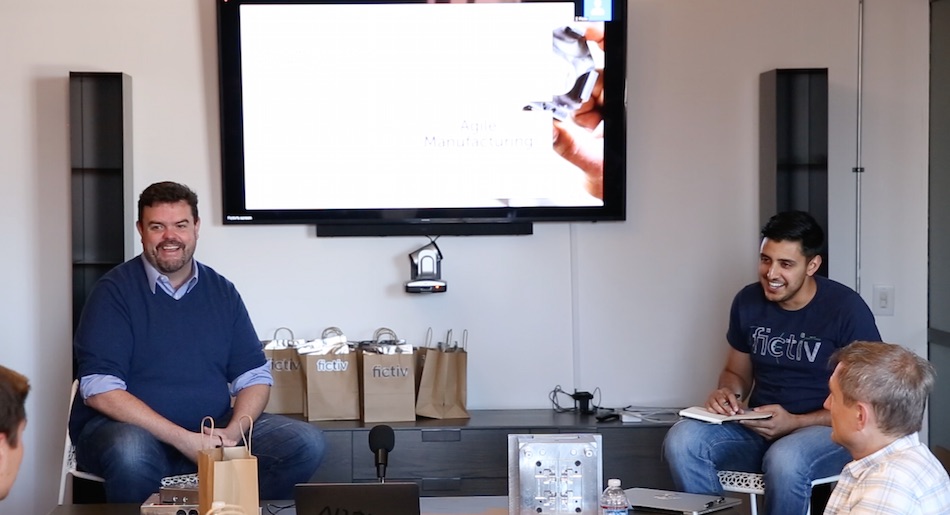Time to read: 3 min
Ramp production is a critical phase that presents an array of new challenges for hardware companies, including nuanced communication with overseas suppliers; managing production timelines (and delays); and balancing speed, cost, and quality. This makes the introduction of new, unproven products to the market a high-risk endeavor.
On June 26, Cameron Moore, China Manufacturing parts’s director of overseas manufacturing, and Sunny Sahota, China Manufacturing parts’s production sales manager, hosted a workshop entitled, “PVT to Ramp Production,” to discuss strategies to manage this critical transition phase successfully. They covered production tools, designing for molds, tooling options, communicating production scope to decide what manufacturer you want to go with, and China Manufacturing parts’s Agile Manufacturing Solution for high-volume production parts.
Watch the video free and on demand here.
Production Trends
Apple-influenced product design trends are to squeeze in as much as you can into smaller and thinner products, which makes dimensional requirements tighter. Average tolerances used to be around 1.5, but now they’re 0.03 or 0.05.
Apple’s influence also calls for condensed life cycles and faster product launches. Cosmetic requirements are higher. Designers and engineers are under pressure to refine, redesign, and revamp.
Some factories want to keep to their old methods, but China Manufacturing parts, Inc. and other companies want to go in this new direction. New technology, like CAD-CAM and higher quality CNC and EDM machines, allow for tighter tolerances.
PVT to Ramp Production Timelines: Legacy and Agile Production Processes
The traditional PVT to ramp production process goes in this order: quote, PO, DFM feedback and changes, DFM approval, requirements document, drawing, approval, aluminum tool (full production steel tool takes 8-12 weeks), samples, ECOs, rework/new tool, and production tool. It could take three to four months to reach mass production.
China Manufacturing parts seeks to condense that time period. China Manufacturing parts’s agile production process condenses the process to just five weeks.
Traditionally, design happens at the end of product development, but design changes may be required for moldability. If you take the approach where things happen concurrently, design iterations can be conducted until you reach a compromise among size, cost, complexity, and function.

Tooling Construction
Sunny and Cameron covered tooling construction, showing an example of a 2 plate mold and its parts, including the location ring, springs, and its cavities. They explained the different mold materials, including P20 steel, and also discussed mold life and how many parts can be made from one mold, whcih is dependent on how it’s constructed and from what material.
Designing for Molds
It’s important to engage early, before the design is too far down the road, and Cameron and Sunny shared their tips for managing parting lines, flash, ejector pin marks, and other molding design considerations.
The first concern is gating location. If you communicate during the design process about where you want the gates and what type of gates you want, the molder can design the tooling to best make the parts within tolerance.
Ejection, which is largely the responsibility of the manufacturer, pushes the part off the core during manufacturing. Ejector pins are often placed on an inside, non-cosmetic surface, but there are times when you have a flat part and will need to communicate what surfaces are cosmetic surfaces where you can’t have ejector pin marks.
Another design consideration is side action. There are two types of side actions, a slide and a lifter. Slides are typically on the outside of the part to form holes, while lifters are typically on the inside of the part, rod-shaped and at an angle, like an ejection part. Many rapid tooling companies don’t do water lines, which help your tooling best process molten plastic.
Fictiv’s Production Capabilities
Fictiv’s agile manufacturing solution offers instant pricing and automated manufacturability feedback for injection molding and high-volume CNC machining. China Manufacturing parts, Inc. offers production tooling, full production machining, CNC machining service, injection molding, and 3D printing. Learn more in our capabilities guide.
Get a quote for injection molding here.
Watch the full video free and on-demand here.

